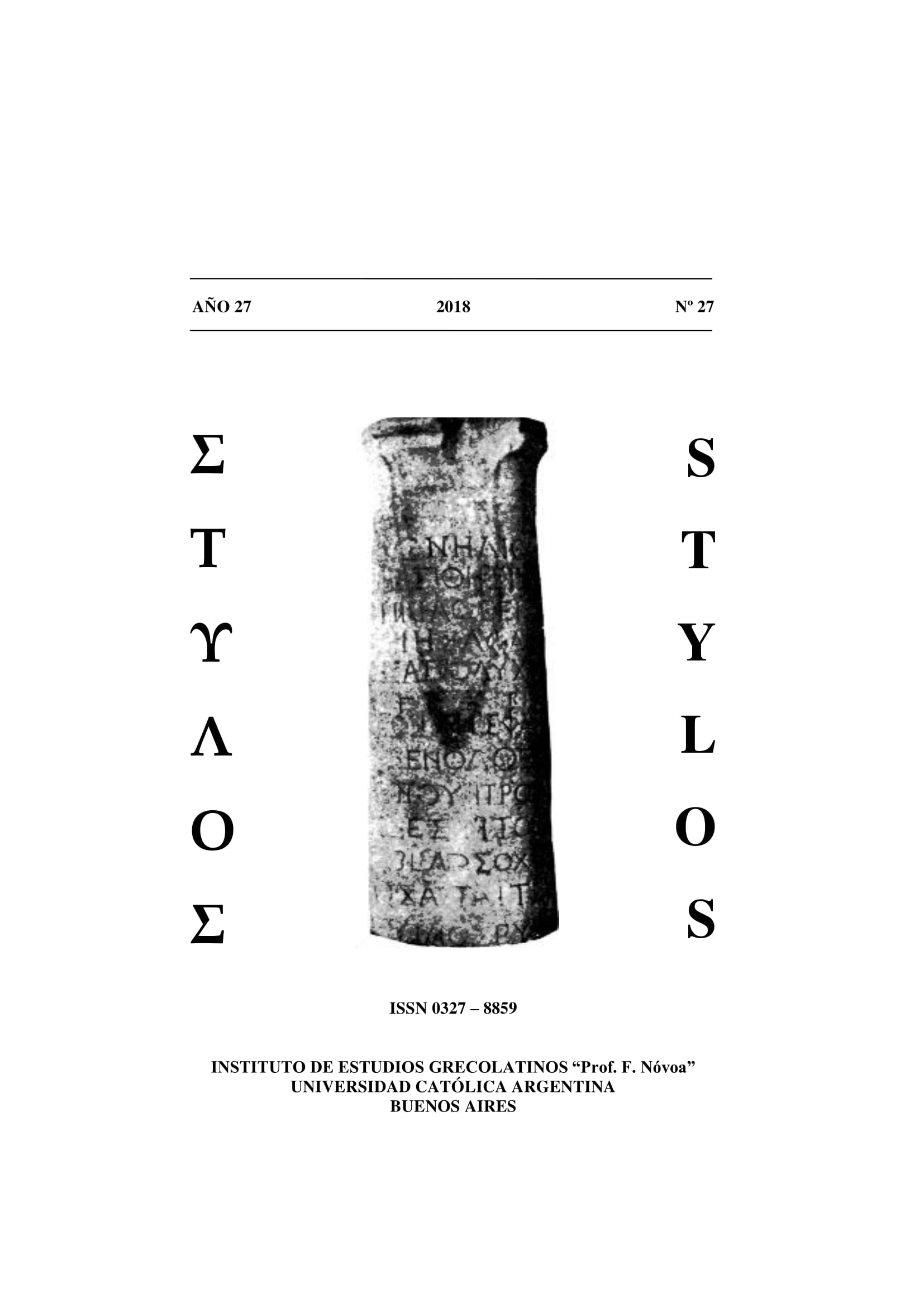Παρθένον ψυχὴν ἔχων (E. HIPP. 1006): UN ANÁLISIS DE LA FEMINIZACIÓN DE HIPÓLITO EN EURÍPIDES
Palabras clave:
Eurípides, Hipólito, filicidio, feminización, parthénos.Resumen
En Hipólito de Eurípides, el joven cuyo nombre recibe la tragedia hace alarde de su pureza y castidad, ya que se rehúsa a aceptar los dones de Cipris al tiempo que adora a la diosa Ártemis, con la que parece tener una relación especial que llega, a veces, a la identificación.
El presente trabajo se centrará en analizar los distintos pasajes en los que se construye un paralelismo entre Hipólito y una doncella (parthénos), en particular dentro del prólogo, del agón entre Teseo y su hijo y del éxodo. Asimismo, tanto su virginidad como su cercanía a Ártemis permiten relacionarlo con Ifigenia, víctima sacrificial también asesinada por su padre. Se considerará este proceso de feminización como condición de posibilidad del filicidio, al entender que la muerte de un hijo varón ocasionada por su padre es un hecho muy grave e inusual en la cultura griega clásica.
Descargas
Citas
ALEXIOU, MARGARET (1974) The Ritual Lament in Greek Tradition. Cambridge: University Press.
GAMBON, L. (2009) La institución imaginaria del oikos en la tragedia de Eurípides. Bahía Blanca: Universidad Nacional de Sur.
GARLAND, R. (1985) The Greek Way of Death. London: Duckworth.
GOFF, B. (1990) The noose of words. Readings of desire, violence & language in Euripides’ Hippolytos. Cambridge: University Press.
GUERCHANOC, F. (2012) L’Oikos en Fête. Paris: Publications de la Sor-bonne.
LEE, M. M. (2003) “The Ancient Greek Peplos and the ‘Dorian Ques-tion’” en Donohue, A. A. & Fullerton, M. D. Ancient Art and Its Historiography. Cambridge: University Press, 118-147.
LEE, M. M. (2006) “Acheloös Peplophoros: A Lost Statuette of a River God in Feminine Dress”, Hesperia 75, 317-325.
LLEWELLYN-JONES, L. (2003) Aphrodite’s Tortoise. The Veiled Woman of Ancient Greece. Swansea: The Classical Press of Wales.
LORAUX, N. (2003 [1989]) “El lecho, la guerra” en Las experiencias de Tiresias: lo femenino y el hombre griego. Buenos Aires: Biblos, 27-54.
MARTIGNONE, H. (2011) “¿Bastardo sin gloria? Herencia y legitimidad en Hipólito de Eurípides” en Rodríguez Cidre, E. & Buis, E. J. La pólis sexuada. Normas, disturbios y transgresiones del género en la Grecia Antigua. Buenos Aires: Editorial de la Facultad de Filosofía y Letras, Universidad de Buenos Aires.
SEGAL, C. (1993) Euripides and the Poetics of Sorrow. Durham and London: Duke University Press.
ZEITLIN, F. (1990) “Playing the Other: Theater, Theatricality, and the Feminine in Greek Drama” en Winkler, J. J. & Zeitlin, F. Nothing to Do with Dionysos? Athenian Drama in Its Social Context. Princeton: University Press.
ZEITLIN, F. (1996) Playing the Other. Gender and Society in Classical Greek Literature. Chicago and London: University of Chicago Press.
INSTRUMENTA STUDIORUM
LIDDELL, H.G. & SCOTT, R (1996 [1843]). Greek-English Lexicon. Oxford: Clarendon Press.
Descargas
Publicado
Cómo citar
Número
Sección
Licencia






